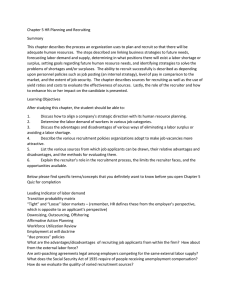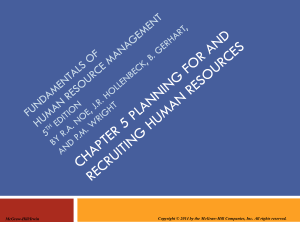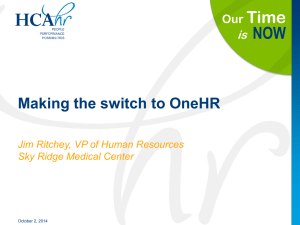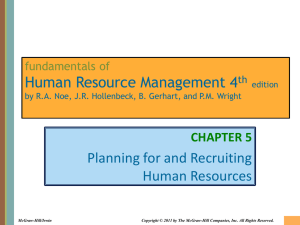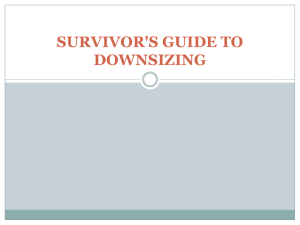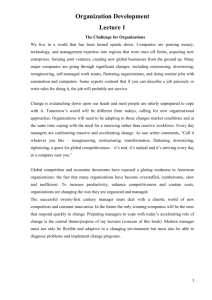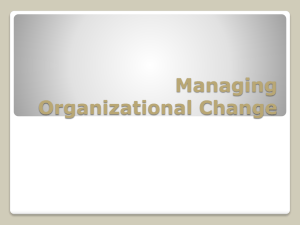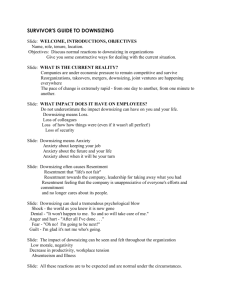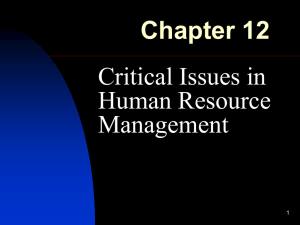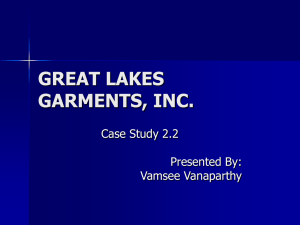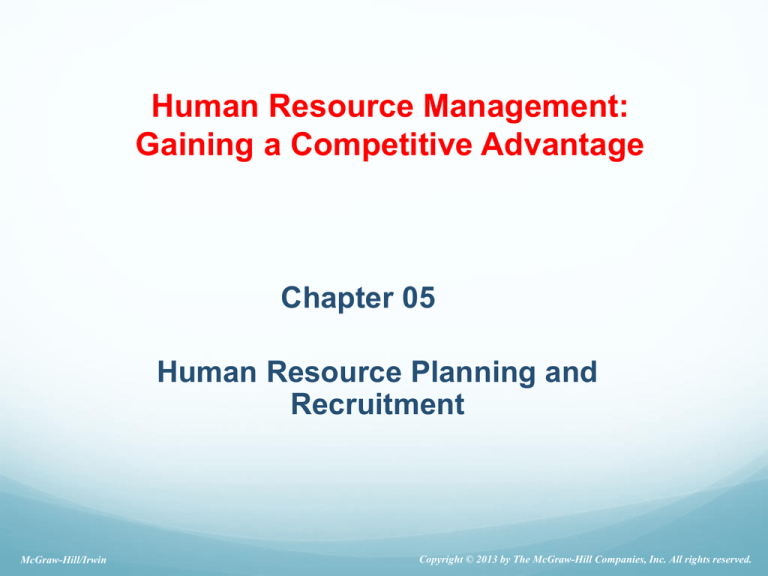
Human Resource Management:
Gaining a Competitive Advantage
Chapter 05
Human Resource Planning and
Recruitment
McGraw-Hill/Irwin
Copyright © 2013 by The McGraw-Hill Companies, Inc. All rights reserved.
Learning Objectives
Discuss how to align company’s strategic direction with
its HR planning.
Determine labor demand for workers in various job
categories.
Discuss advantages and disadvantages of ways to
eliminate a labor surplus and avoid a labor shortage.
Describe various recruitment policies to make job
vacancies more attractive.
List various sources from which job applicants can be
drawn, their advantages and disadvantages and
evaluation methods.
Explain the recruiter’s role, limits and opportunities.
5-2
2. Goal Setting
&
Strategic
Planning
5-3
Forecasting Stage of HR Planning
Determine Labor Demand
derived from product/service demanded
external in nature
Determine Labor Supply
Internal movements caused by transfers, promotions,
turnover, retirements, etc.
transitional matrices identify employee movements
in different job categories over time to chart historical
trends in company’s labor supply
useful for AA / EEO purposes
Determine Labor Surplus or Shortage
5-4
Options for Reducing Expected
Labor Surplus
Option
1.
2.
3.
4.
5.
6.
7.
8.
9.
Downsizing
Pay reductions
Demotions
Transfers
Work sharing
Hiring freeze
Natural attrition
Early retirement
Retraining
Speed
Fast
Fast
Fast
Fast
Fast
Slow
Slow
Slow
Slow
Human Suffering
High
High
High
Moderate
Moderate
Low
Low
Low
Low
5-5
Options for Avoiding Expected
Labor Surplus
Option
Speed
Revocability
Fast
Fast
Fast
Slow
Slow
Slow
Slow
5-6
Downsizing
Downsizing -planned elimination of large numbers of
personnel to enhance organizational competitiveness.
4 Reasons for Downsizing:
1. reduce labor costs
2. technological changes reduce need for labor*
3. mergers and acquisitions reduce bureaucratic
overhead
4. organizations change location of where they do
business
* Economy wide, capital spending ratio increased over 300% between 19902010, indicating employers substituting technology for labor.
5-7
Possible Negative Effects of Downsizing
Long-term effects of an improperly managed
downsizing effort can be negative.
Lower long-term profit, performance and productivity
Loss of talent
Disrupts social networks needed for creativity and
innovation
5-8
Early Retirement Programs
The average age of U.S. workforce is increasing.
Baby boomers are not retiring early due to:
improved health
fear that Social Security will be cut
mandatory retirement is outlawed
collapse of the financial and housing markets made it
economically unviable to retire
Many employers try voluntary attrition among
older workers through early retirement incentive
programs.
5-9
Employing Temporary Workers
Hiring temporary workers helps eliminate a labor
shortage and affords flexibility needed to operate
efficiently during demand swings.
3 Advantages:
1. Temporary workers free a company from
administrative tasks and financial burdens.
2. Temporary workers are often times tested by a
temporary agency.
3. Many temporary agencies train employees before
sending them to employers.
5-10
Outsourcing and Offshoring
Outsourcing uses an outside organization for a
broad set of services.
Offshoring is outsourcing where jobs leave one
country and go to another.
To help ensure the success of outsourcing:
Choose an established, large outsourcing vendor.
Jobs that are proprietary or require tight security
should not be outsourced.
Start small and monitor constantly.
5-11
Affirmative Action Planning
Plan for various subgroups within a labor force.
Workforce utilization review is a comparison of
the proportion of workers in protected subgroups
with the proportion that each subgroup represents.
5-12
HR Recruitment Process
Job Choice
Vacancy
Characteristics
Job
Choice
Applicant
Characteristics
Personnel Policies
Recruitment Influences
5-13
Personnel Policies
Organizational decisions that affect the
nature of the vacancies for which people are
recruited.
Characteristics of the vacancy are more important than
recruiters or recruiting sources.
Personnel Policies vary:
Internal versus external recruiting
Extrinsic versus intrinsic rewards
Employment-at-will policies
Image advertising
5-14
Recruitment Sources
JOBS
Newspaper Advertising large volume, low quality
recruits
5-15
Recruiters
Functional Area
HR versus operating area specialist
Traits
warm and informative
Realism
realistic job preview
honesty
5-16
2 Steps to Enhance Recruiter Impact
1. Provide timely feedback
2. Recruit in teams
5-17
Summary
HR planning uses labor supply and demand
forecasts to anticipate labor shortages and
surpluses to enhance organization’s success
and reduce human suffering.
HR recruiting creates an applicant pool should
a labor shortage occur.
Organizations can use recruiters to influence
individuals’ perceptions of jobs.
5-18


